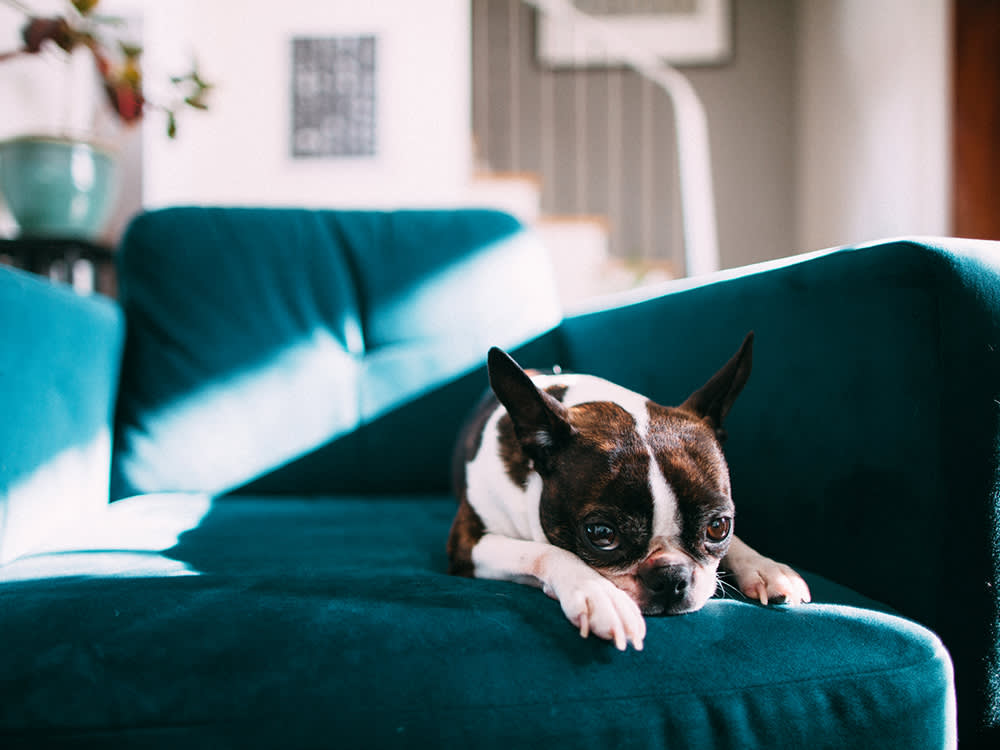SOS: Why Does My Dog Pee When I Pet Them?
Keep the faith; you can fix this pee-action.
When you first brought your adorable little puppy home, accidents were part of life. You also probably got used to wiping up pee so often that you didn’t even bother putting the cleaning supplies opens in a new tabback in the cabinet. This especially happened when your friends would come over and lean down to pet your puppy, which triggers the waterworks.
If your dog pees when they are being approached by people or dogs, when they are being greeted and pet, or when they hear loud noises while displaying submissive postures (such as cowering, tucking their tail between their legs, flattening their earsopens in a new tab, or rolling), you are probably dealing with submissive urination — and you’re not alone.
Get (totally free) deals for food, treats, accessories, tech and way more pet parenting must-haves.
Submissive urination is a common and normal problem among puppies. Some dogs who are otherwise completely housetrained release at least some urine during greetings. Contrary to popular belief, submissive urination is not a housetrainingopens in a new tab problem. It’s a social issue.
When Puppies Pee On The Floor It's Normal
If you have a puppy who pees when you pet them, know that most dogs outgrow this behavior by the time they are a year old. Also, dogs with this issue almost always have lovely, sweet temperaments. So, while the urination can be irritating and a pain to clean up, the fact that dogs greet people or other dogs in this manner actually speaks well of them.
Ironically, when a dog urinates during greetings, they are showing respect for the other dog or person.
What to Do About Submissive Urination In Older Dogs
I recently consulted with a family whose sweet, three-year-old Newfoundland was urinating inside the home. Because their veterinarian could find no medical reason for it, she referred them to me to handle the “housetraining” problem. To many people, house-soiling without a medical cause is always related to housetraining, but behaviorists recognize that many issues involving urination indoors can be signs of appeasement behavior or a need to mark territory, among other possibilities.
Initially, it was challenging to get contextual information from the family about the problem because they just kept saying, “He pees everywhere, and it’s such a mess!” Then, they would detail the clean-up, which was no doubt considerable given that the dog weighed 125 pounds. With persistent inquiry, however, I was finally able to get a fuller picture; it turned out that the dog’s issue was not a housetraining problem.
The dog’s housetraining was solid, but they peed during greetings. As a puppy, they urinated whenever they greeted anyone. But now, they only did it when greeting the husband or the occasional male visitor, especially if the visitor reached for the dog.
Recognizing that the inappropriate urination was a specific type of social issue rather than one of bladder control — or not knowing or caring where it was appropriate to pee — made it easier to address the real issue: the husband’s approach to his sensitive dog. He thought he was doing right by his dog by being firm and applying stern, consistent discipline, but he was open to a new approach.
I was able to help the family by teaching the husband kinder, gentler and more effective ways to interact with his dog and influence the dog’s behavior. As a result, the dog stopped having accidents in the house. No program designed to solve a housetraining problem would have achieved this result, which had the added benefit of improving the overall family dynamic as well.
In short, keep the faith — and keep the cleanup spray handy.


